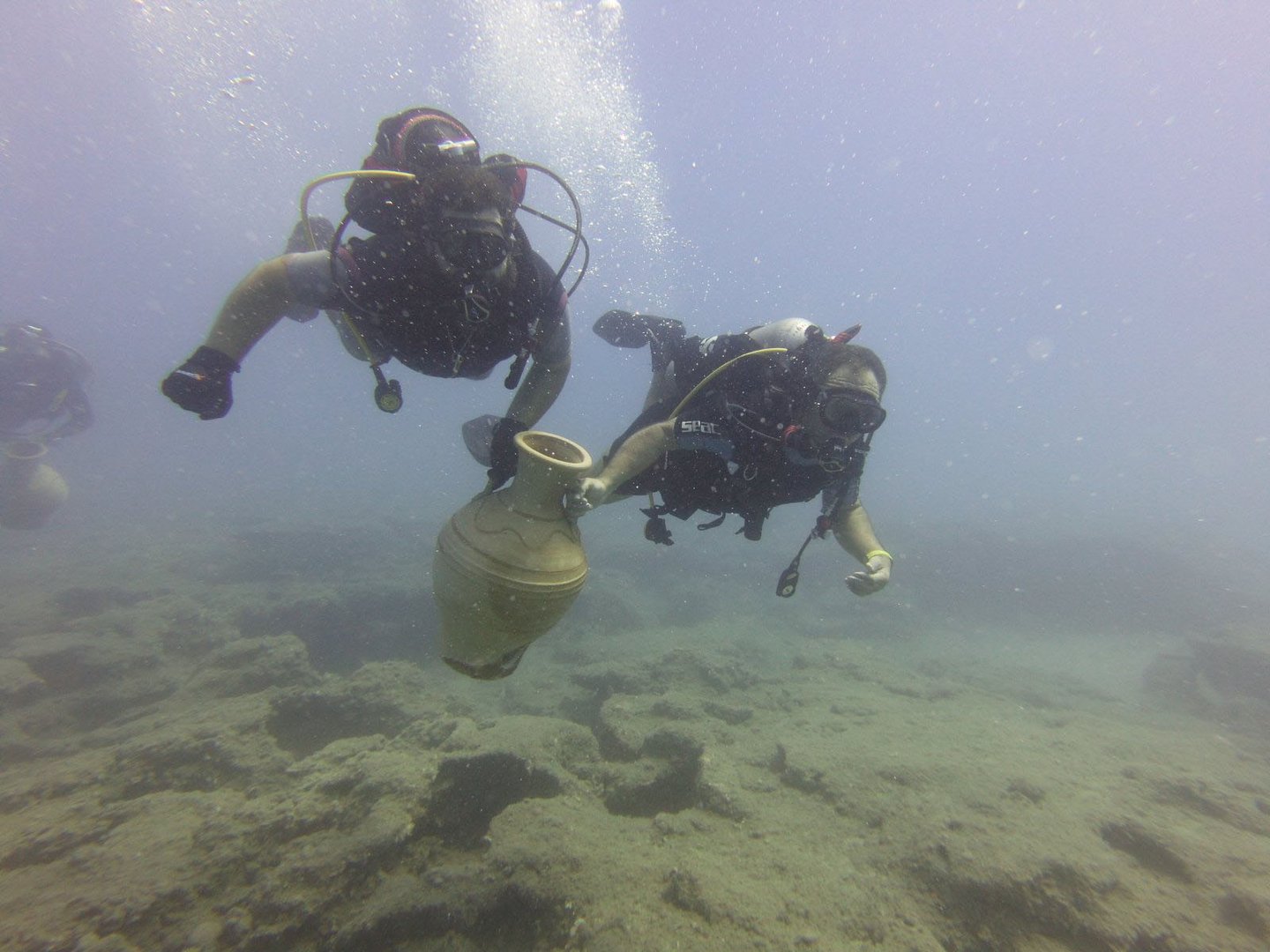Melissa Hekkers went on board to see the sinking of 60 amphorae
By 10am the boat that was driving us to our meeting point was anchored in place. At about one kilometre off the shore of Larnaca and approximately at the height of the Palm Beach hotel, we swayed with the waves within Larnaca’s Marine Protected Area (MPA).
Established in 2020 by the Department of Fisheries, the protected area nowadays hosts one of the island’s most newly formed artificial reefs, where two vessels were sunk back in 2019. At a 13-metre depth there are the 63-metre ship ‘Elipda’ and the 15-metre vessel ‘LEF1’

Giorgos Pagiatas from the fisheries department and Dinos Lefkaritis chairman of the Larnaca tourism board (right)
Today’s meeting was all about enhancing the efforts carried out by various local entities to not only enrich the marine life and biodiversity of the area but also diving tourism for which Larnaca has become well known. Aside Larnaca’s long standing Zenobia shipwreck which has been rated as on of the top ten wreck dives in the world, Larnaca’s artificial reef aims to accommodate the most experienced divers, as well as free divers. Having established the reef at a 13-metre depth also enables swimmers with a mask and snorkel to access and enjoy the area.
Getting to the reef was perhaps the easiest part of our morning, for once on location where we met a second boat equipped with divers and some 60 specially created amphorae of different sizes, the sinking and placement of these amphorae was put in motion. Ten divers took the lead at the height of the seabed. Once the amphorae were slowly lifted off the boat and dropped to the bottom of the sea via a rope, divers worked in pairs to meticulously place the amphorae in two clusters at designated areas on the reef, just aside the LEF1 vessel.

Some of the amphorae ready for sinking
As the representative for the Department of Fisheries and research officer Giorgos Pagiatas explained, all amphorae, all around 50 to 60cm high, had holes drilled into them to provide entries for marine life to find shelter and had to be placed in a particular way so as to keep entries open and for the clay pots to eventually be chained together. It was impressive to see the coordination and workmanship of those working above water and those working at the bottom of the sea. Savouring Cyprus’ crystal clear waters, we could see the divers working under us and we stood aboard witnessing a sustainable action that is deemed to last for lifetimes.
Already home to various marine species including groupers, wrasses, damselfish, mullets, seahorses and occasionally turtles to name a few, Pagiatas is hopeful that the plethora and number of species will increase. Having already experienced the outcomes of placing pottery in the sea in other areas of the island, the ‘spectacular results’ he describes only cultivates hope.
Yet many will wonder why there is the need to create protected marine areas or even increase the local marine population. And unfortunately it always comes down to the same perpetrator: human action. Overfishing and significant threats and degradation to the marine environment have been highlighted. While it has been legally banned to fish in the area for the past three years, Dinos Lefkaritis, Larnaca tourism board chairman, although satisfied with the efforts being carried out in the area, was quick to stress the importance of the cooperation of relative authorities in combating illegal fishing in protected areas.

Admitting that measures are already in place, Lefkaritis refers to the ‘mentality of our people’.
“If we want to call ourselves a European country, we must act accordingly,” Lefkaritis said.
Technically speaking, Pagiatis also explained that the location in question is made up of a soft substrate with sand which is why authorities are slowly trying to increase the hard substrate, in order to create the ideal conditions for fish shelters, which octopus, for example, are fond of.
In anticipation of an additional 35 amphorae to be placed in a third designated area in the near future, it has to be said that besides the environmental aspect, the reef and its adornments are set to charm divers to the area; the island’s waters are one of its jewels, there’s nothing wrong with adding a couple more diamonds.







Click here to change your cookie preferences